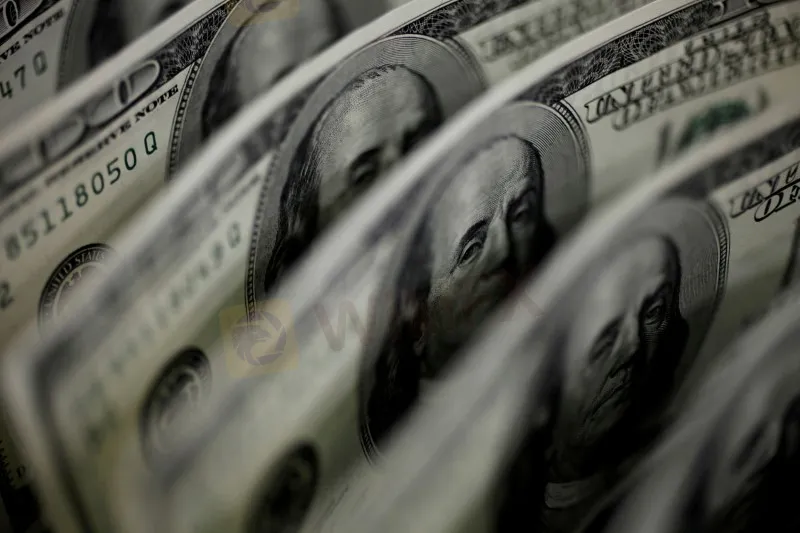简体中文
繁體中文
English
Pусский
日本語
ภาษาไทย
Tiếng Việt
Bahasa Indonesia
Español
हिन्दी
Filippiiniläinen
Français
Deutsch
Português
Türkçe
한국어
العربية
Dollar firms as U.S. inflation poses next test
Abstract:The dollar made a steady start to the week in Asia on Monday but stayed below Friday peaks, as currency traders seek a path between markets' volatile rate projections and central bankers vowing a wait-and-see approach despite surging inflation.

The dollar made a steady start to the week in Asia on Monday but stayed below Friday peaks, as currency traders seek a path between markets' volatile rate projections and central bankers vowing a wait-and-see approach despite surging inflation.
The next big test of faith in the Federal Reserve's insistence on patience looms on Wednesday, when U.S. inflation data is expected to show consumer growth running hot.
In the Asia session, the dollar was bid against the yen and clawed back some ground lost last week, rising 0.2% to 113.65 yen. The dollar also rose slightly on the euro to $1.1558, though remained below the 15-month top of $1.15135 made in the wake of strong U.S. labour data on Friday.
Sterling, which was walloped when the Bank of England (BoE) surprised traders by holding rates steady last week, hovered at $1.3478 after falling as far as $1.3425 on Friday, a five-week low.
The BoE's surprise triggered a sharp pullback in aggressive bets on imminent rate hikes in Britain and globally.
“Central banks have distorted a whole lot of markets, pumping up the equity market and pumping up the bond market,” said Jason Wong, a strategist at Bank of New Zealand in Wellington. “Currencies are sort of in the middle of all that, wondering what the hell's going on.”
The risk-sensitive Australian and New Zealand dollars struggled to make much headway in early trade, with the Aussie pinned just below $0.74 and the New Zealand dollar around $0.7126. [AUD/]
The U.S. dollar index rose 0.1% to 94.308.
Later on Monday no fewer than six Fed officials are speaking, with the most attention likely to be on Vice Chair Richard Clarida who is talking on Fed and ECB policy.
Goldman Sachs (NYSE:GS), which recently pulled forward its Fed hike expectations from the third quarter of 2023 to July 2022, believes the earlier hike could support the greenback.
“We have reduced the degree of dollar depreciation in our forecasts, especially vs the euro,” Goldman analysts said, though they expect the dollar to weaken in 2023 and beyond.
Elsewhere, data showed Chinese exports were unexpectedly strong and imports unexpectedly soft in another indicator of underwhelming demand, especially as China tightens movement restrictions to keep a lid on COVID-19.
The Communist Party begins a meeting on Monday which is expected to pass a resolution in praise of President Xi Jinping and lay the groundwork for a third term of his leadership.
Traders are also looking ahead to Chinese producer and consumer price data due on Wednesday, with annual producer price growth seen surging to 12% in perhaps a harbinger of further price pressure to come through global supply chains.
The yuan was steady at 6.3958 per dollar.
Source: Investing.com

Disclaimer:
The views in this article only represent the author's personal views, and do not constitute investment advice on this platform. This platform does not guarantee the accuracy, completeness and timeliness of the information in the article, and will not be liable for any loss caused by the use of or reliance on the information in the article.
Read more

Economic and Political Shifts Impact Global Markets Part 2
Recent developments include President Biden's potential re-election reconsideration, Asia-Pacific market highs, PwC's auditing issues in China, potential acquisitions in the energy and retail sectors, geopolitical tensions, and regulatory actions impacting markets. Key impacts include fluctuations in USD, CNY, CAD, TWD, EUR, GBP, and AUD, with significant effects on stock markets across the US, Asia, and Europe.

Economic and Political Shifts Impact Global Markets Part 1
Recent developments include President Biden's potential re-election reconsideration, Asia-Pacific market highs, PwC's auditing issues in China, potential acquisitions in the energy and retail sectors, geopolitical tensions, and regulatory actions impacting markets. Key impacts include fluctuations in USD, CNY, CAD, TWD, EUR, GBP, and AUD, with significant effects on stock markets across the US, Asia, and Europe.

USDJPY Predicted to Rise on Yen Depreciation
The USD/JPY pair is predicted to increase based on both fundamental and technical analyses. Fundamental factors include a potential easing of aggressive bond buying by the Bank of Japan (BoJ), which could lead to yen depreciation. Technical indicators suggest a continuing uptrend, with the possibility of a correction once the price reaches the 157.7 to 160 range.

GEMFOREX - weekly analysis
Top 5 things to watch in markets in the week ahead
WikiFX Broker
Latest News
Spotware Unveils cTrader Store, Global Marketplace for Algo Creators
Elderly Trader Loses RM2.1M in WhatsApp Forex Scam
Gigamax Scam: Tracking Key Suspects in RM7 Million Crypto Fraud
Singaporean Arrested in Thailand for 22.4 Million Baht Crypto Scam
Trader Turns $27 Into $52M With PEPE Coin, Breaking Records
ASIC Sues HSBC Australia Over $23M Scam Failures
CFI Partners with MI Cape Town, Cricket Team
Doo Financial Expands Reach with Indonesian Regulatory Licenses
WikiFX Review: Is IQ Option trustworthy?
5 Questions to Ask Yourself Before Taking a Trade
Currency Calculator



